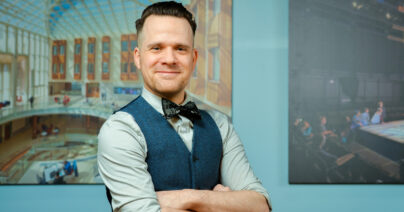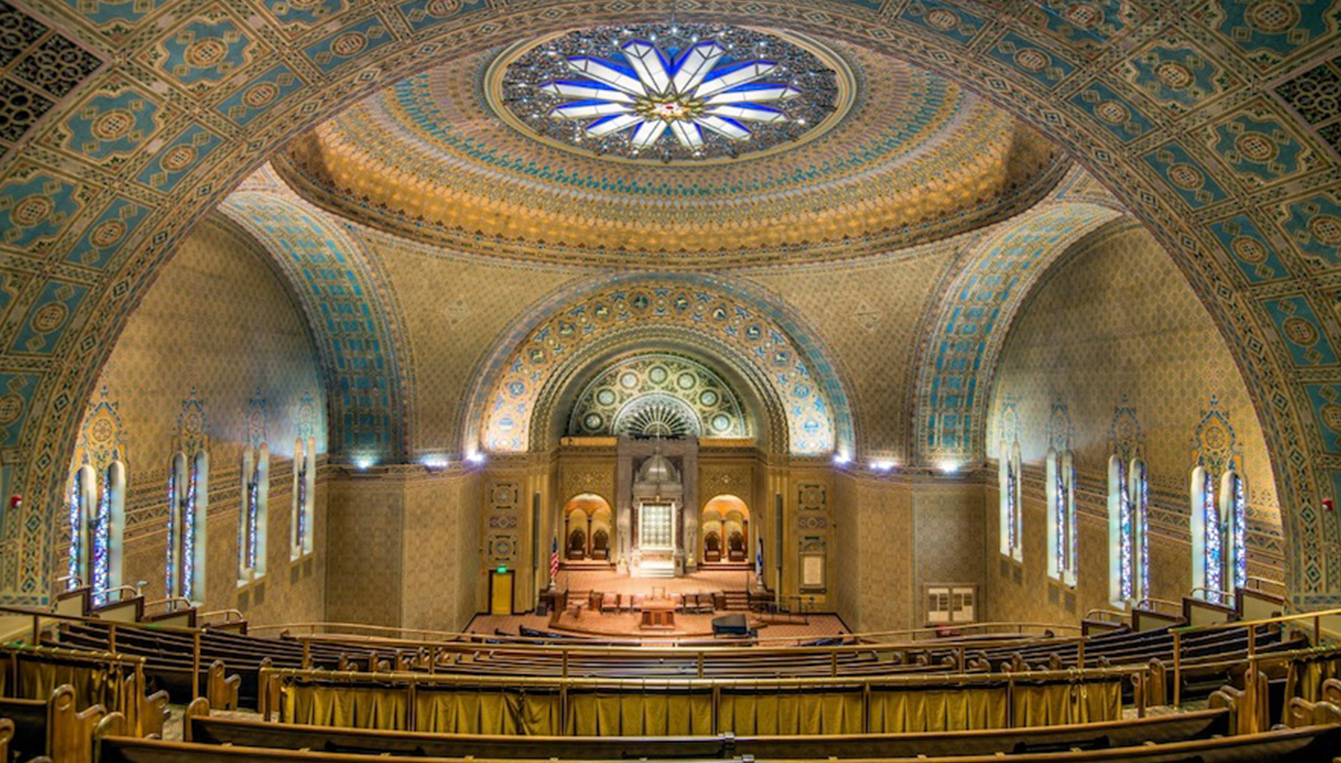 News
News
John Zeman, LEED AP BD+C Joins Acentech to Lead California Office
Acentech is pleased to announce that John Zeman, LEED AP, BD+C has joined the firm to lead its Los Angeles office.

[by Perry Artese]
Around this time last year, our team in Philadelphia had a chance to wrap up a multi-year project for Rodeph Shalom Synagogue. It is one of the oldest in the city, constructed in 1928 and is on the National Register of Historical Places. Throughout the years, multiple sound systems were installed into the massive, almost theater-like space (1400 seats) with limited success. The main feature that reduced speech intelligibility was the tremendous dome above the main sanctuary. Since Acentech is a company of diverse thinkers and collaborators, I didn’t have to look any further than the cube next to me to get some expert assistance from Joe Horesco (of our Arch Mech group) for insight on the acoustical properties of the room. Joe and I devised a plan to measure the acoustics of the room to make a base line of performance. We used EASRA, a comprehensive, real-time analyzer to look at level, Speech Transmission Index, and reverb time at all frequencies. The results confirmed what we were hearing. Joe recalls,
“While listening to amplified music through the full system, we found that there was generally a good level of clarity and intelligibility; however, the room did exhibit some prominent and problematic echoes, particularly audible with short duration amplified sounds. These echoes are likely to blame for much of the acoustical difficulty reported by users, particularly for amplified speech, though music clarity is also affected. The long dimensions of the room and the lack of sound absorbing treatment at the walls or ceiling is the obvious cause of these echoes.”
In addition, amplified sound was coming from everywhere (no disrespect to past engineers). Speakers had been installed on the front walls, the side walls, under the balcony, and in the balcony walls. As we turned off speaker systems and measured again, we saw improved speech transmission and realized the solution was to “point” the sound at the congregation, not the room. Ultimately after auditioning and researching the new line array speaker options we selected the one offering the most control, or “beam steering.” We obtained the sound level and coverage that we needed and vastly improved the listening experience for the congregation.
We used, as we often do, the power of collaboration and teamwork for both accuracy and quality control. Two roles, mine as a technical engineer and Joe’s as the analyst, were used to take a more “holistic” approach to rogue sound solutions. The end result was a modern, full range sound system that sounded clearer and more musical than anything the synagogue expected. But, for Acentech, it was the sound of “teamwork.”